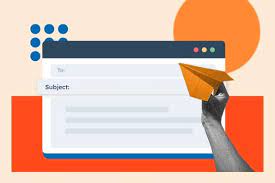Introduction
Emails are a crucial component of our communication in today’s world. Whether it is professional communication or personal, emails are one of the most effective ways to convey messages to others. However, not all emails are crafted equally. Some are well written, while others are poorly written. To write an effective email, certain elements are necessary to follow. In this article, we will discuss the 5 key elements of an effective email with tips and examples for writing professional and persuasive emails.
The 5 Key Elements of an Effective Email
1. Clear and Concise Subject Line
The subject line of your email is the first thing the recipient sees. It is essential to have a clear and concise subject line that accurately describes the content of the email. A well-written email subject line can make all the difference in whether the recipient decides to open or delete the email. A subject line that lacks clarity may end up in the recipient’s spam or trash folder.
Tips:
- Keep the subject line short and simple
- Use keywords to describe the email’s content
- Avoid using all caps or using too many exclamation points
Example:
Subject: Follow-up on Our Meeting
2. Professional Greeting
The greeting of an email sets the tone for the entire message. A professional greeting shows that you are respectful and courteous towards the recipient. To be professional, you can use “Dear” followed by the recipient’s name or job title.
Tips:
- Address the recipient by name or job title in the greeting
- Avoid using informal greetings like “Hey” or “Hi” in a professional setting
- Double-check the spelling of the recipient’s name
Example:
Dear John,
3. Purpose and Body of the Email
The body of the email should be focused on the purpose of the email. It should be concise and to the point, making it easy for the recipient to read and understand. To ensure that your email is well-structured, you should organize the content into short paragraphs or bullet points.
Tips:
- Stay focused on the purpose of the email
- Use short paragraphs and bullet points to make the content easy to read
- Be concise and avoid using unnecessary words
Example:
Dear John,
I am writing to follow up on our meeting regarding the new marketing strategy. After reviewing the proposal, I have a few questions:
– Have we considered the impact of social media on our target audience?
– How do we plan to allocate the budget for the new campaign?
– What metrics will we use to track the success of the campaign?
Thank you for your time.
4. Professional Closing
The closing of an email is just as important as the greeting. A professional closing shows that you acknowledge the recipient’s time and effort in reading the email. You can include a call to action, a polite closing, and a signature that includes your name and contact information.
Tips:
- Include a call to action or next steps if necessary
- Use a polite closing to show appreciation for the recipient’s time
- Include a signature with your name and contact information
Example:
Thank you for taking the time to read this email. Please let me know if you have any further questions or concerns.
Best regards,
Jane Doe
Marketing Manager
ABC Company
[email protected]
555-555-5555
5. Proofreading and Editing
Finally, proofreading and editing are crucial elements of an effective email. Grammar and spelling mistakes can make the email look unprofessional and sloppy. To avoid such mistakes, you should proofread the email before hitting send.
Tips:
- Double-check for spelling and grammar mistakes
- Ensure coherence and clarity in your message
- Read out the email to yourself or a colleague to check for errors
Example:
Dear John,
I am writing to follw up on our meetin regarding the new marketig stratefy. Afetr reveiwing the propasl, I hav a few quetions:
– Have we consired the impact of socail meida on our taregt audiens?
– How do we plan to aloocat the bugdet for the new Compaign?
– What matrix will we use to trak the success of the Compaign?
Thak you for your time.
Conclusion
In conclusion, writing an effective email requires you to follow these critical elements. A clear and concise subject line, professional greeting, purpose and body of the email, professional closing, proofreading and editing are all essential parts of writing a persuasive and professional email. Use these tips and examples to write an email that will leave a formidable impression on the recipient.
5 FAQs About Writing Professional Emails
The length of an email depends on the content and purpose of the message. However, it is recommended to keep the email concise and to the point. An email should be no longer than a few paragraphs or a page.
Using personal pronouns in professional emails can make the message more relatable and engaging. However, it is essential to keep the tone professional and not too informal.
The appropriate font to use in professional emails is standard fonts such as Arial, Times New Roman, or Calibri. These fonts are easy to read and do not distract from the message.
If the recipient’s gender is unknown, you can use their job title or their full name. For example, “Dear Taylor Johnson” or “Dear Human Resources Director.”
The frequency of follow-up emails depends on the urgency of the matter. If it is an urgent matter, you can follow up within a day or two. If it is less urgent, you can wait up to a week to follow up. However, it is important not to follow up too frequently as it may appear pushy or annoying.


